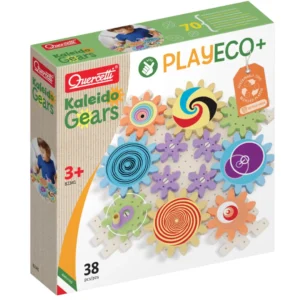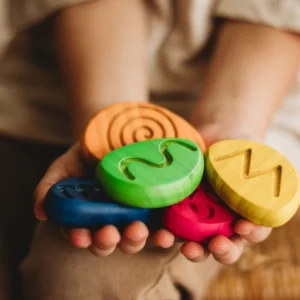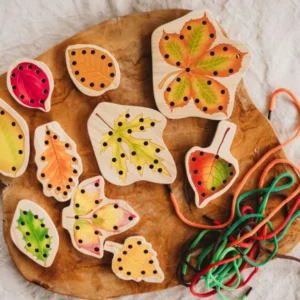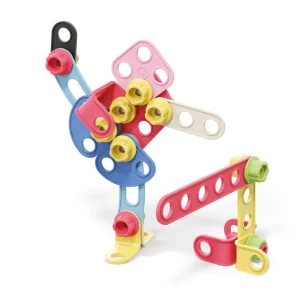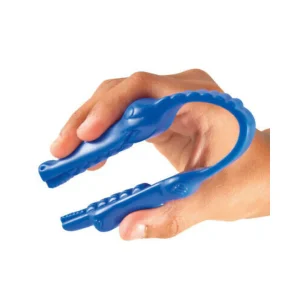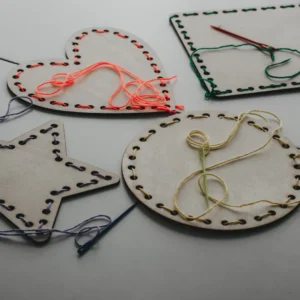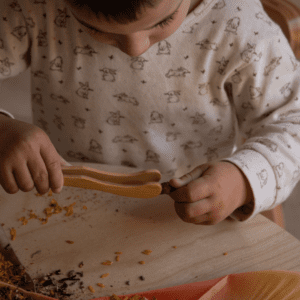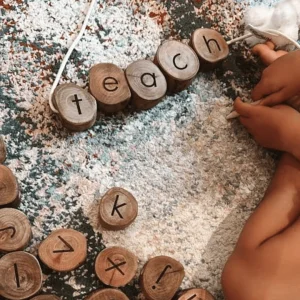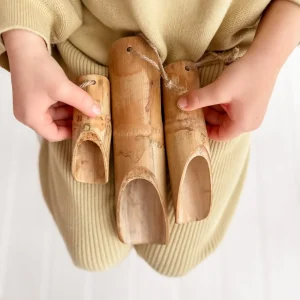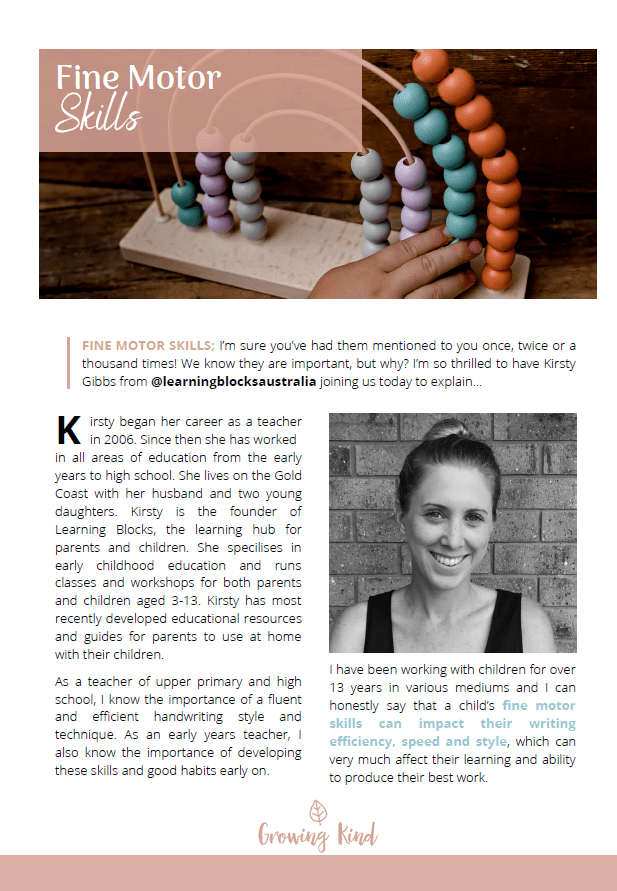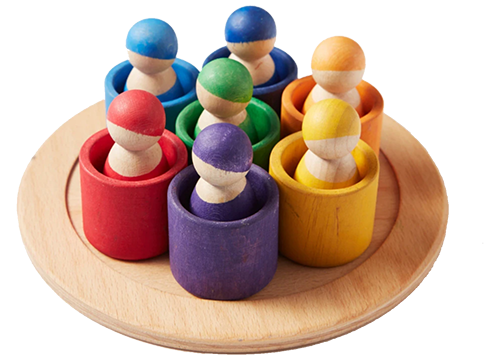FINE MOTOR SKILLS; I’m sure you’ve had them mentioned to you once, twice or a thousand times! We know they are important, but why? I’m so thrilled to have Kirsty Gibbs from @learningblocksaustralia joining us today to explain…
Kirsty began her career as a teacher in 2006. Since then she has worked in all areas of education from the early years to high school. She lives on the Gold Coast with her husband and two young daughters. Kirsty is the founder of Learning Blocks, the learning hub for parents and children. She specilises in early childhood education and runs classes and workshops for both parents and children aged 3-13. Kirsty has most recently developed educational resources and guides for parents to use at home with their children.

As a teacher of upper primary and high school, I know the importance of a fluent and efficient handwriting style and technique. As an early years teacher, I also know the importance of developing these skills and good habits early on.
I have been working with children for over 13 years in various mediums and I can honestly say that a child’s fine motor skills can impact their writing efficiency, speed and style, which can very much affect their learning and ability to produce their best work.
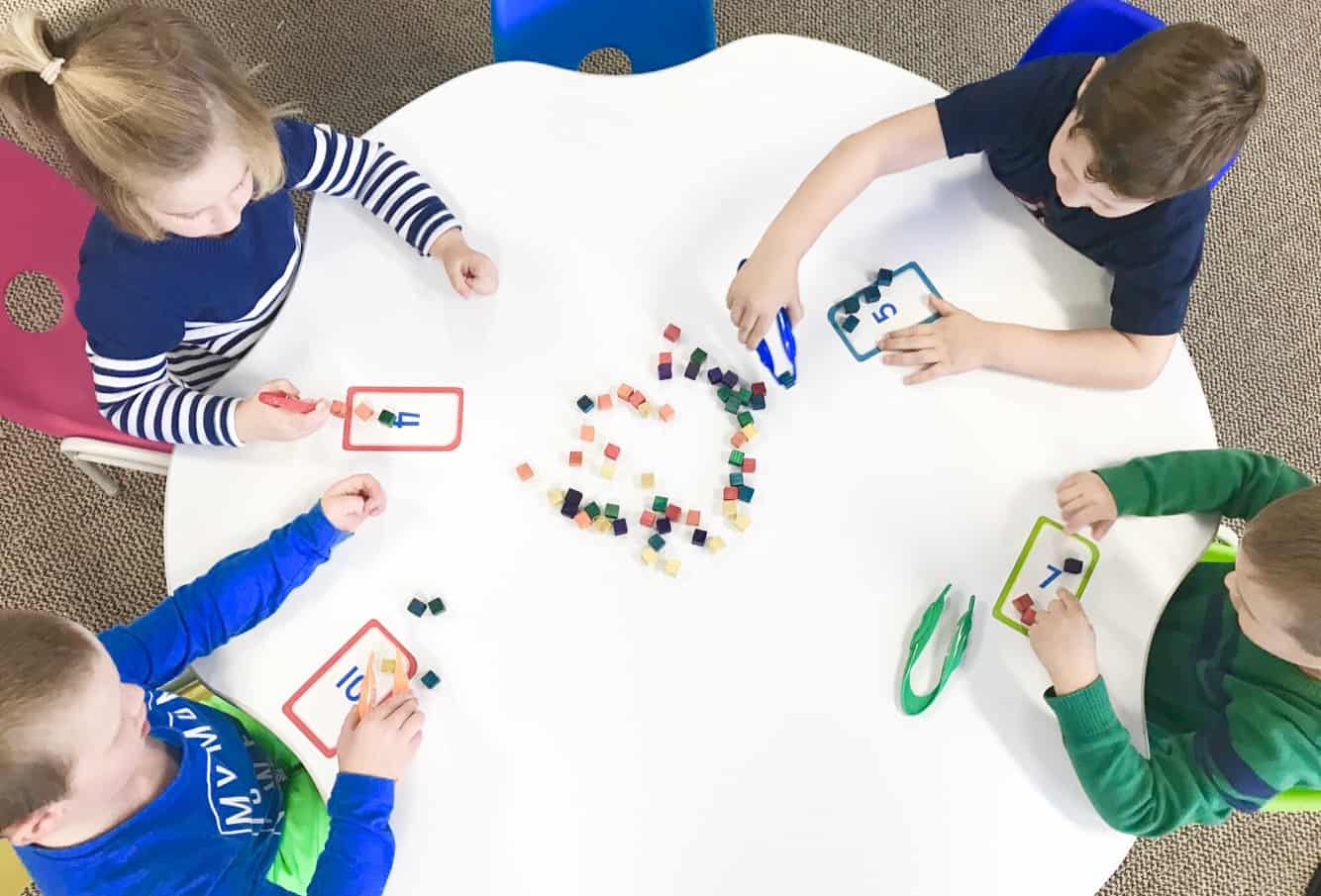
What are fine motor skills?
Fine motor skills are those skills that involve the use of the small muscles in the hands, fingers and thumb. When developing fine motor skills, we are working to improve finger and hand strength, wrist rotation and hand-eye coordination. These skills begin to develop when your child is only a few months old and are crucial for academic activities such as holding a pencil, writing, drawing, cutting, pasting, using a keyboard and manipulating objects. We also use fine motor skills in our everyday lives when we use cutlery, dress ourselves, use zips and buttons, do our hair, clean our teeth, open car doors, open and close lunchboxes and water bottles and so much more.
Are fine motor skills just about tracing letters?
Improving your child’s fine motor skills is not just about getting them to do lots of writing practice or letter tracing. There are some necessary building blocks that your child needs in order to develop their fine motor skills, such as: bilateral integration (using two hands with one hand leading), crossing the mid-line (the ability to cross the imaginary line that runs down the middle of your body), hand dominance, hand and finger strength, hand-eye coordination, hand division, object manipulation and body awareness (being aware of their body position and body movement).
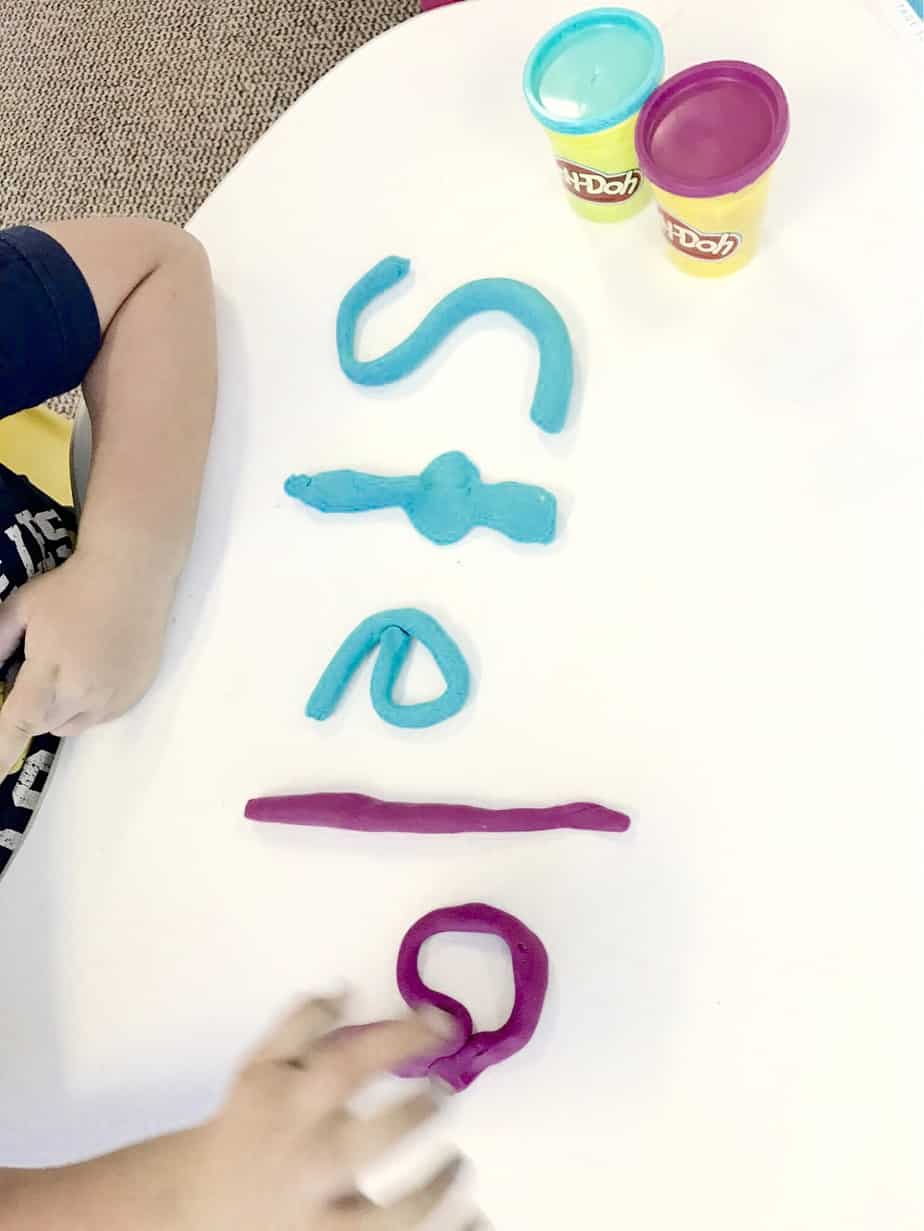
You can help your child develop these skills through a variety of activities, such as the ones I have included in our fine motor ‘Busy Little Boxes’. As parents and educators, we should determine which is the dominant hand and reinforce its more frequent use in these small, precise movements and activities. We want to be giving our children opportunities to practice using both hands to perform tasks; for example, using two hands to stretch out the slime, or using two hands when threading. We also want our children to explore tasks that involve just one finger or two fingers at once, for example finger painting. Improving your child’s finger strength can be done through clipping or pegging activities.

Why are fine motor skills important for my child?
As I already mentioned, fine motor skills are not just relevant to toddlers and preschoolers, they are lifelong skills that we continue to use throughout our schooling and adult lives. Children who have difficulties with fine motor skills can often adopt poor handwriting skills which can lead to a lot of physical fatigue in their hands and slow writing, meaning work is not completed in class and they take much longer to complete homework tasks and assignments at home. These challenges can lead to poor self-esteem as the child compares themselves to their peers and experiences added pressure from teachers, parents and themselves.
What can I do to develop my child’s fine motor skills?
Activities such as threading, lacing, Lego, Duplo, craft, playdough and using tongs are all great ways to help your child improve their fine motor skills. To help parents with ideas and save on time, money and wastage, we have put together our new Busy Little Boxes and we are excited to say that we have a box dedicated to developing fine motor skills. With a new box each month jam packed with new activities, based around a new theme, you are sure to have loads of quality and age-appropriate activities ready to go! If you’re like most parents and are time poor and don’t have a “Mr. Maker” cupboard, then the Busy Little Boxes will suit you perfectly. It’s also important to remember to let your child be as independent as possible. Encourage them to do things, such as dress themselves, undo their own buttons, brush their own teeth (you will still need to do a follow up brush), feed themselves and use cutlery.




